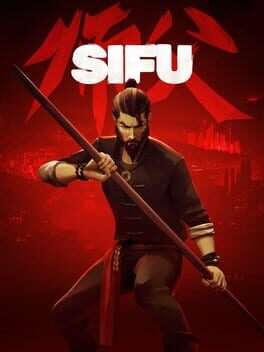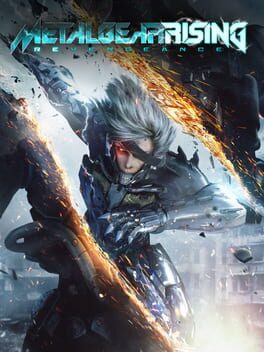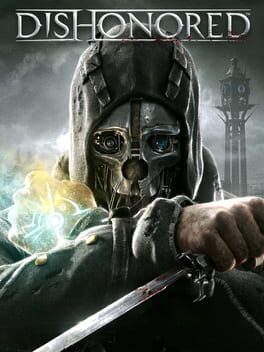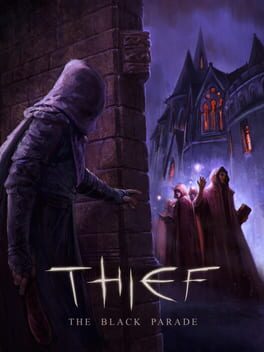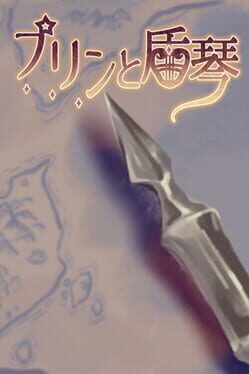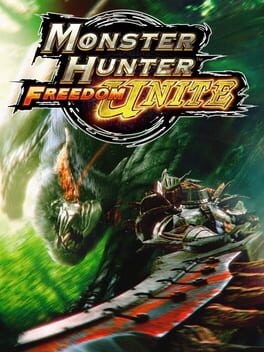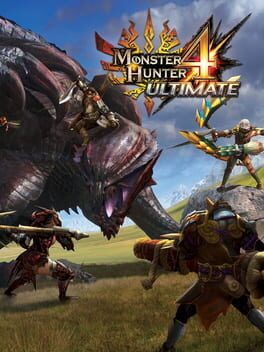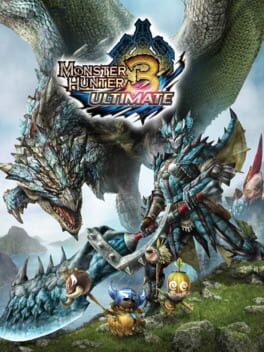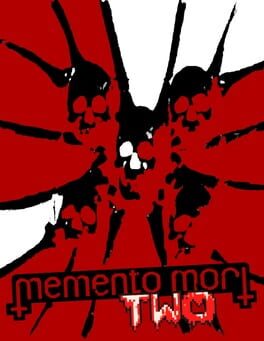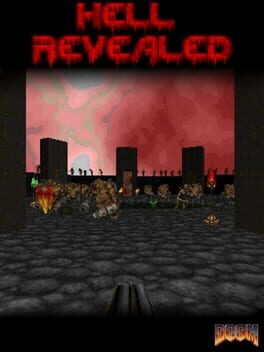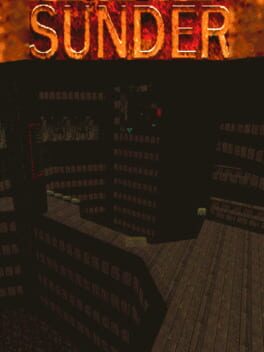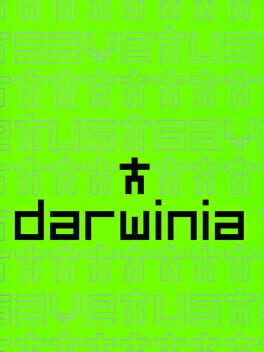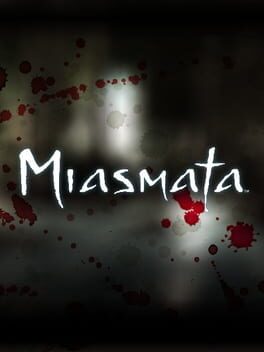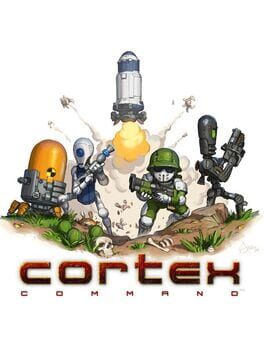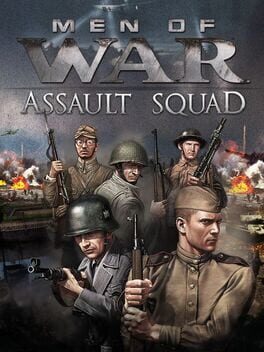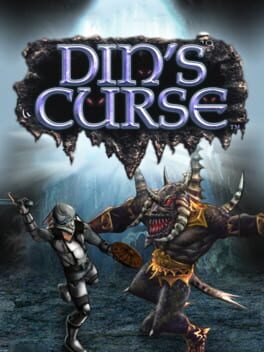cloudfilming
41 reviews liked by cloudfilming
Dragon's Dogma II
2024
In one of its previews, Hideaki Itsuno was deliberately evasive when asked about why Dragon’s Dogma II’s title screen initially lacks the II, saying only “nothing in this game is unintentional.” You can draw whatever conclusion you like from that, but I think I’ve a different interpretation from most – it’s less a signal that this is a reimagining or a remake or whatever else in disguise than a display of confidence in how well he and his team understand what makes it tick.
As much as I’ll never wrap my head around how they got the first Dragon’s Dogma running on 7th gen hardware (albeit just about), I would’ve said it was impossible not to feel how much more II has going on under the hood in even the briefest, most hasty of encounters if it weren’t being so undersold in this respect. While my favourite addition is that enemies’ individual body parts can now be dragged or shoved to throw them off balance, tying into both this new world’s more angular design and how they can be stunned by banging their head off of its geometry, yours might be something else entirely with how many other new toys there are to play with. One particularly big one’s that you and your pawns can retain access to your standard movesets while clinging to larger enemies if you manage to mantle onto them from the appropriate angle, but you’ve gotta watch out for the newly implemented ragdoll physics while doing so, since the damage received from getting bucked off now varies wildly depending on your position at the time and the nearby environment as a result of them. Successive strikes create new avenues of offence akin to Nioh’s grapples, pressuring you to get as much damage in as you can before letting one loose and taking your target out of its disadvantage state, while also enabling you to keep them in a loop if you’re able to manipulate their stun values well enough. Layers of interaction just keep unravelling further as you play – controlling the arc you throw enemies or objects in, tackling smaller enemies by grabbing them mid-air, corpses or unconscious bodies of bosses now being tangible things you can stand on top of instead of ethereal loot pinatas… I would’ve taken any one of these in isolation. To have them all, plus more, every one being wholly complementary and faithful to the scrambly, dynamic, improvisational core of Dragon’s Dogma’s combat? It’s i n s a n e to me that someone can undergo even a confused few minutes of exposure to any of this and reduce it to “more of the first” or what have you.
Your means of approaching enemies or general scenarios which return from the first game’re further changed by II’s more specialised vocations. Having spent most of my time with Warrior in both titles, I love what’s been done with it in particular. They’ve taken the concept of timing certain skills and applied it to almost every move, anything from your standard swings to its final unlockable skill becoming faster and faster as you time successive inputs correctly – this is only the slow, basic version of the latter and I still feel bad for whatever I batter with it – with chargeable skills now also doubling as a parry for attacks they collide with, similar to DMC5’s clashing mechanic. It’s emblematic of the devs’ approach to vocations in general; Archer’s relatively lacking melee options and litany of flippy, full-on Legolas nonsense encourages keepaway where its four predecessors were all slightly differing flavours of “does everything”, Thief trades access to assault rifle-like bows and invites stubbiness for being able to navigate this world’s much rockier terrain like it’s a platformer, Fighter no longer has to waste skill slots to hit anything slightly above your head and has more versatile means of defence in exchange for melee combat being more punishing in general, etc. It’s to the extent that choosing between any two vocations feels like I’m switching genres, man. In a landscape where people are demonstrably content with having no means of interacting with big monsters other than smacking their ankles, how is even a pretty simple interaction like this not supposed to feel like a game from the future?
On simple interactions, much of this would be lessened if it weren’t for the loss gauge in tandem with the camping system and how these accentuate the sense of adventure which the first game built. The persistent thoughts of “how do I get there?” are retained, but only being able to fully recuperate your health via downtime with the lads and/or ladesses fills every step of the way toward the answer with that much more trepidation, bolstered further by the aforementioned verticality and on the more presentational side of things by how your pawns actually talk to each other now. It leads to some very memorable, emergent experiences which are personal purely to you – one I’m especially fond of involved resting after killing a drake, having my camp ambushed in the middle of the night by knackers who were too high up for me to exercise my k-word pass and having to trek all the way back to Bakbattahl with barely a third of my maximum health as my party continually chattered about how freaky the dark is. I take back the suggestion I made regarding potential changes to the healing system in my review of the first game, because even superfans (or, maybe, especially superfans) can, and do, think too small.
I realise in retrospect that even I, on some level, was wanting certain aspects of Dragon’s Dogma to be like other games instead of taking it on its own merits, something II’s seemingly suffered from all the more with how much gaming has grown since the original’s release, the average player’s tolerance for anything deviating from the norm and, presumably, frame of reference growing ever smaller. Look no further than broad reactions to dragonsplague and its effects (which I won’t spoil) being only the second or third most embarrassing instance of misinformed kneejerk hostility disguised as principled scepticism which enveloped this game’s release to the point you’d swear Todd Howard was attached to it – we want consequences that matter, but not like that! Even if you aren’t onboard with this being the coolest, ballsiest thing an RPG has bothered and will bother to do since before I was born, how can you not at least get a kick out of starting up your own homegrown Dragonsplague Removal Service? You thought you could escape the great spring cleaning, Thomyris, you silly billy? I’m oblivious like you wouldn’t believe, had her wearing an ornate sallet by the time she’d first contracted it and still noticed her glowing red eyes every time, so I’m at a loss as to how it could blindside anybody. It vaguely reminds me of modern reactions to various aspects of the original Fallout; a game which you can reasonably beat in the span of an afternoon, designed to be played with a single hand, somehow commonly seen as unintuitive because it just is, okay? Abandon all delusions of levelheadedness: if a Fallout game with a timer were to release now, the world’s collective sharting would result in something similar to that universe’s Great War or, indeed, Dragon’s Dogma II’s own post-game.
For as many hours as I’ve poured into the Everfall and Bitterblack across two copies of the original, they’re not what I think of when I think of Dragon’s Dogma (or particularly interesting, in the former’s case), which is adventuring in its open world. In that regard, I can’t be convinced that II’s post-game isn’t far more substantial, comparatively rife with monsters either unique or which you’re very unlikely to encounter prior to it, changes to the world’s layout beyond a hole in the ground of one city, its own mechanics (one actually a bit reminiscent of Fallout’s timer), questlines and even setpieces. It’s got a kaiju fight between a Ray Harryhausen love letter and a demonic worm thing which, as of the time of writing, roughly 2% of players have discovered, and instead of being praised for the sheer restraint it must’ve taken to keep something like that so out of the way, it’s chastised for it?
I’m not sure any other game’s ever made me realise how divorced what I want out of games seems to be from the wider populace. So much of this is 1:1 aligned with my tastes that the only thing that feels potentially missing’s the relative lack of electric guitars, but even then I’d be a liar if I told you that Misshapen Eye, the dullahan’s theme, the griffin’s new track, the post-game’s somber piano keys or the true ending’s credits song among others haven’t gotten stuck in my head at some stage anyway or didn’t perfectly complement the action through dynamically changing. It manages this despite clearly not caring about what you or I or anyone else thinks or wants from it. It’s developed a will and conviction all of its own. It’s Dragon’s Dogma, too.
As much as I’ll never wrap my head around how they got the first Dragon’s Dogma running on 7th gen hardware (albeit just about), I would’ve said it was impossible not to feel how much more II has going on under the hood in even the briefest, most hasty of encounters if it weren’t being so undersold in this respect. While my favourite addition is that enemies’ individual body parts can now be dragged or shoved to throw them off balance, tying into both this new world’s more angular design and how they can be stunned by banging their head off of its geometry, yours might be something else entirely with how many other new toys there are to play with. One particularly big one’s that you and your pawns can retain access to your standard movesets while clinging to larger enemies if you manage to mantle onto them from the appropriate angle, but you’ve gotta watch out for the newly implemented ragdoll physics while doing so, since the damage received from getting bucked off now varies wildly depending on your position at the time and the nearby environment as a result of them. Successive strikes create new avenues of offence akin to Nioh’s grapples, pressuring you to get as much damage in as you can before letting one loose and taking your target out of its disadvantage state, while also enabling you to keep them in a loop if you’re able to manipulate their stun values well enough. Layers of interaction just keep unravelling further as you play – controlling the arc you throw enemies or objects in, tackling smaller enemies by grabbing them mid-air, corpses or unconscious bodies of bosses now being tangible things you can stand on top of instead of ethereal loot pinatas… I would’ve taken any one of these in isolation. To have them all, plus more, every one being wholly complementary and faithful to the scrambly, dynamic, improvisational core of Dragon’s Dogma’s combat? It’s i n s a n e to me that someone can undergo even a confused few minutes of exposure to any of this and reduce it to “more of the first” or what have you.
Your means of approaching enemies or general scenarios which return from the first game’re further changed by II’s more specialised vocations. Having spent most of my time with Warrior in both titles, I love what’s been done with it in particular. They’ve taken the concept of timing certain skills and applied it to almost every move, anything from your standard swings to its final unlockable skill becoming faster and faster as you time successive inputs correctly – this is only the slow, basic version of the latter and I still feel bad for whatever I batter with it – with chargeable skills now also doubling as a parry for attacks they collide with, similar to DMC5’s clashing mechanic. It’s emblematic of the devs’ approach to vocations in general; Archer’s relatively lacking melee options and litany of flippy, full-on Legolas nonsense encourages keepaway where its four predecessors were all slightly differing flavours of “does everything”, Thief trades access to assault rifle-like bows and invites stubbiness for being able to navigate this world’s much rockier terrain like it’s a platformer, Fighter no longer has to waste skill slots to hit anything slightly above your head and has more versatile means of defence in exchange for melee combat being more punishing in general, etc. It’s to the extent that choosing between any two vocations feels like I’m switching genres, man. In a landscape where people are demonstrably content with having no means of interacting with big monsters other than smacking their ankles, how is even a pretty simple interaction like this not supposed to feel like a game from the future?
On simple interactions, much of this would be lessened if it weren’t for the loss gauge in tandem with the camping system and how these accentuate the sense of adventure which the first game built. The persistent thoughts of “how do I get there?” are retained, but only being able to fully recuperate your health via downtime with the lads and/or ladesses fills every step of the way toward the answer with that much more trepidation, bolstered further by the aforementioned verticality and on the more presentational side of things by how your pawns actually talk to each other now. It leads to some very memorable, emergent experiences which are personal purely to you – one I’m especially fond of involved resting after killing a drake, having my camp ambushed in the middle of the night by knackers who were too high up for me to exercise my k-word pass and having to trek all the way back to Bakbattahl with barely a third of my maximum health as my party continually chattered about how freaky the dark is. I take back the suggestion I made regarding potential changes to the healing system in my review of the first game, because even superfans (or, maybe, especially superfans) can, and do, think too small.
I realise in retrospect that even I, on some level, was wanting certain aspects of Dragon’s Dogma to be like other games instead of taking it on its own merits, something II’s seemingly suffered from all the more with how much gaming has grown since the original’s release, the average player’s tolerance for anything deviating from the norm and, presumably, frame of reference growing ever smaller. Look no further than broad reactions to dragonsplague and its effects (which I won’t spoil) being only the second or third most embarrassing instance of misinformed kneejerk hostility disguised as principled scepticism which enveloped this game’s release to the point you’d swear Todd Howard was attached to it – we want consequences that matter, but not like that! Even if you aren’t onboard with this being the coolest, ballsiest thing an RPG has bothered and will bother to do since before I was born, how can you not at least get a kick out of starting up your own homegrown Dragonsplague Removal Service? You thought you could escape the great spring cleaning, Thomyris, you silly billy? I’m oblivious like you wouldn’t believe, had her wearing an ornate sallet by the time she’d first contracted it and still noticed her glowing red eyes every time, so I’m at a loss as to how it could blindside anybody. It vaguely reminds me of modern reactions to various aspects of the original Fallout; a game which you can reasonably beat in the span of an afternoon, designed to be played with a single hand, somehow commonly seen as unintuitive because it just is, okay? Abandon all delusions of levelheadedness: if a Fallout game with a timer were to release now, the world’s collective sharting would result in something similar to that universe’s Great War or, indeed, Dragon’s Dogma II’s own post-game.
For as many hours as I’ve poured into the Everfall and Bitterblack across two copies of the original, they’re not what I think of when I think of Dragon’s Dogma (or particularly interesting, in the former’s case), which is adventuring in its open world. In that regard, I can’t be convinced that II’s post-game isn’t far more substantial, comparatively rife with monsters either unique or which you’re very unlikely to encounter prior to it, changes to the world’s layout beyond a hole in the ground of one city, its own mechanics (one actually a bit reminiscent of Fallout’s timer), questlines and even setpieces. It’s got a kaiju fight between a Ray Harryhausen love letter and a demonic worm thing which, as of the time of writing, roughly 2% of players have discovered, and instead of being praised for the sheer restraint it must’ve taken to keep something like that so out of the way, it’s chastised for it?
I’m not sure any other game’s ever made me realise how divorced what I want out of games seems to be from the wider populace. So much of this is 1:1 aligned with my tastes that the only thing that feels potentially missing’s the relative lack of electric guitars, but even then I’d be a liar if I told you that Misshapen Eye, the dullahan’s theme, the griffin’s new track, the post-game’s somber piano keys or the true ending’s credits song among others haven’t gotten stuck in my head at some stage anyway or didn’t perfectly complement the action through dynamically changing. It manages this despite clearly not caring about what you or I or anyone else thinks or wants from it. It’s developed a will and conviction all of its own. It’s Dragon’s Dogma, too.
Dragon's Dogma II
2024
I'm not done the game yet or anything, but I've done the main quest and a bunch of side quests, so I felt like writing up about it.
As much as I decently enjoyed dragons dogma 1 it was definitely an extremely annoying game with jank overload and just the most egregious traveling ever even though I was playing dark arisen I didn't even know the eternal ferrystone was a thing so most of it I was just playing normally. It has fine combat, but you get pretty busted pretty quick, and the game felt like it ended multiple times just to keep going.
This game very much ends a bit abruptly. Despite that, though, I enjoyed it a bit more being a more straightforward boss rather than a script fest. Dragons Dogma 2 has some great gameplay with a great sense of exploration. I know that people will dog on the enemy variety and how often you'll find hobgoblins, harpies, or bandits, yet I find the enemy variety to be quite good since they offer different changes to your playstyle. (I'm especially glad there's no evil eye) I hope this game reaches the group that finds games nowadays to be boring or the people who think devs don't make more bold games anymore.
Overall, I think this game shouldn't exist in a good way. I'm glad we got it even with its performance issues and use of microtransactions (which are extremely tame for microtransactions and the first game already used). I think it's worth playing, and there's a lot of secret substories you probably wouldn't know about and secret bosses you wouldn't find just doing the main story. Like the first game, there's way more to it than just killing the dragon. I recommend it.
As much as I decently enjoyed dragons dogma 1 it was definitely an extremely annoying game with jank overload and just the most egregious traveling ever even though I was playing dark arisen I didn't even know the eternal ferrystone was a thing so most of it I was just playing normally. It has fine combat, but you get pretty busted pretty quick, and the game felt like it ended multiple times just to keep going.
This game very much ends a bit abruptly. Despite that, though, I enjoyed it a bit more being a more straightforward boss rather than a script fest. Dragons Dogma 2 has some great gameplay with a great sense of exploration. I know that people will dog on the enemy variety and how often you'll find hobgoblins, harpies, or bandits, yet I find the enemy variety to be quite good since they offer different changes to your playstyle. (I'm especially glad there's no evil eye) I hope this game reaches the group that finds games nowadays to be boring or the people who think devs don't make more bold games anymore.
Overall, I think this game shouldn't exist in a good way. I'm glad we got it even with its performance issues and use of microtransactions (which are extremely tame for microtransactions and the first game already used). I think it's worth playing, and there's a lot of secret substories you probably wouldn't know about and secret bosses you wouldn't find just doing the main story. Like the first game, there's way more to it than just killing the dragon. I recommend it.
Sifu
2022
When I started planning out my next run through the game while I was stuck on the final boss, I knew I was in. When I started looking up the utility of individual moves and philosophy behind Wude, I knew this had jumped to becoming something very special for me. It took a long time to get here- the joke being that it took the game being sold as a beat ‘em up for me to pick it back up again (thanks Raph!), but I’m glad I did.
One of the most telling things for me was when I started considering it alongside some of my favorite games: Thought a lot about ZeroRanger and the way it secretly primes you to see the appeal of going for a one-credit clear- and the basic logic of the death counter serves a similar function, getting you to really take note of your successes and failures as you plot out the best way through each of the levels: Take a shortcut, even if it means missing a few helpful upgrade statues, or try your hand at some of the tougher encounters, where you might take some extra deaths but end up improving chances of success long-term.
It’s a great tension, something that keeps the appeal of a 1CC alive over multiple levels, though I think some levels capitalize on it better than others- the third stage is the obvious standout, with immediate access to the boss and complete control over which encounters you want to pursue. Out of all the levels, it’s the one where those questions change the most on each new attempt, debating the merits of trying to hit every Shrine in order to best prepare for one of the toughest fights in the game. It’s a spike in complexity and difficulty that I don’t think the game is ever able to quite match again, and between it and the incredible production of Stage 2, as you flicker in and out of reality, I’m sort of inclined to say that the game peaks by the halfway point- though the latter half is still excellent, and further speaks to the way the systems here bolster so much of the action.
Even a fight that might seem inconsequential in the moment has ramifications that can really spiral outwards: what weapons you used, how much damage you took, whether or not you used your Focus meter and now have to build it back up again- and with the ability for some enemies to activate a more powerful second form if you perform a takedown on them, even the simplest interaction in the game carries some considerations with it. So often with action games, I find you need to set some intrinsic goals for yourself- the reality being that playing the game as-is never really pushes the mechanics far enough. I feel like I’ve spent more time on the structure of Sifu than on the granularities of combat, but that’s partly because it’s the framing of these mechanics that really pushes the game over the edge.
The game’s unusual cohesiveness reminds me a lot of Inaba discussing Hideki Kamyia’s directing- that the quality of his games wasn’t just the result of raw talent, but time and effort and a wide variety of inspirations. Reading on Slo-Clap’s variety of influences, from arcade games to martial arts cinema to drawing from the experience Pak Mei experts, it’s hard not to see Inaba’s sentiment borne out here as well- just a remarkable amount of consideration for everything here.
Some stray thoughts:
- I have no basis for this, but I feel like the destructible physics objects were something that someone fought like hell to keep, and if so, I’m totally glad they did. Running around and breaking chairs is legitimately one of the high points of the game- maybe made all the better by how measured the game is otherwise.
- The Arenas mode reminds me a lot of what originally liked about the Streets of Rage 4 DLC, a complimentary mode that’ll keep the game evergreen. Especially like the way cheats and gameplay modifiers are added to some of the scenarios, really distinguishes the fights from one another and shows a side of the game I’d never opt into normally. I think the biggest compliment I can pay the mode is that, when I needed a break from Sifu, I just played Sifu: Arenas.
- Camera is far better than most action games, with certain objects in the environment going transparent for the sake of clarity, but the few moments where it lapses feel far more devastating (especially given the penchant for being cornered in Sean’s arena) given the penalty for failure is so high- Oni once again reigns supreme among 3D action games with its camera design.
- And this is intensely pedantic, but I spent a lot of time wondering if the aging mechanic should have been framed a bit differently- I love the idea of becoming a wise old master, but in practice, getting that old is normally a sign of a lifetime of chronic screw-ups. Something that tapped into the sense that you were unnaturally re-animated, like the corruption of your character in Shadow of the Colossus, becoming more pallid and deathly over time (and as an added bonus, it could work as another cinematic reference in a game full of them- add The Crow to the list!), but at that point, when I’m workshopping some alternate way of visualizing these systems, it’s probably more a sign of how deep in I am than some major fault of the game.
All that said, there’s not really a clean way for me to close this out- I told myself I could only talk about the game if I could clear it at under 50 years old, but in doing so, I realized how little of the game I could really speak to- terrifying for the purposes writing on it, wonderful for the realization that there’s so much left to uncover. In a genre full of games with unspoken caveats and that hint at what could be, Sifu ends up being something remarkably fully-formed, unusually complete.
///
References:
But instead of being some genius with ideas coming out of thin air, it’s more due to his nature and he gets ideas from a lot of different places and inspiration from diverse things and he thinks about things for a long time… his process needs space.
- Producer Atsushi Inaba, discussing Hideki Kamyia’s directing style, From 1UP
Both Oldboy and The Raid were inspirations for the design and art teams working on Sifu. In general, the game is filled with references and inspirations from many action & martial arts movies, such as John Wick, Sha Po Lang/Killzone, and Tom-Yum-Goong/The Protector… There were many different inspirations and references for the team, but for gameplay two good examples are Sekiro: Shadows Die Twice as well as God Hand on the PS2.
- From a Q&A with GameRant
The style we are focused on for Sifu is the Pak Mei style. Jordan (our creative director) and myself, as well as others in the studio have various backgrounds in martial arts but Jordan specifically trained in the Pak Mei style. We’ve worked closely with a sifu here in France to make sure the details of the Pak Mei study are represented accurately in the game. There’s so much history and nuance across all of the styles but we’ve been super inspired by diving deep into this one for Sifu.
- SloClap Executive Producer Pierre Tarno, on the martial arts depicted in the game, From mp1st
///
Some additional resources on the game:
How to enjoy Sifu (thanks Ziad!)
Sifu - Why you should use... Charged Backfist
One of the most telling things for me was when I started considering it alongside some of my favorite games: Thought a lot about ZeroRanger and the way it secretly primes you to see the appeal of going for a one-credit clear- and the basic logic of the death counter serves a similar function, getting you to really take note of your successes and failures as you plot out the best way through each of the levels: Take a shortcut, even if it means missing a few helpful upgrade statues, or try your hand at some of the tougher encounters, where you might take some extra deaths but end up improving chances of success long-term.
It’s a great tension, something that keeps the appeal of a 1CC alive over multiple levels, though I think some levels capitalize on it better than others- the third stage is the obvious standout, with immediate access to the boss and complete control over which encounters you want to pursue. Out of all the levels, it’s the one where those questions change the most on each new attempt, debating the merits of trying to hit every Shrine in order to best prepare for one of the toughest fights in the game. It’s a spike in complexity and difficulty that I don’t think the game is ever able to quite match again, and between it and the incredible production of Stage 2, as you flicker in and out of reality, I’m sort of inclined to say that the game peaks by the halfway point- though the latter half is still excellent, and further speaks to the way the systems here bolster so much of the action.
Even a fight that might seem inconsequential in the moment has ramifications that can really spiral outwards: what weapons you used, how much damage you took, whether or not you used your Focus meter and now have to build it back up again- and with the ability for some enemies to activate a more powerful second form if you perform a takedown on them, even the simplest interaction in the game carries some considerations with it. So often with action games, I find you need to set some intrinsic goals for yourself- the reality being that playing the game as-is never really pushes the mechanics far enough. I feel like I’ve spent more time on the structure of Sifu than on the granularities of combat, but that’s partly because it’s the framing of these mechanics that really pushes the game over the edge.
The game’s unusual cohesiveness reminds me a lot of Inaba discussing Hideki Kamyia’s directing- that the quality of his games wasn’t just the result of raw talent, but time and effort and a wide variety of inspirations. Reading on Slo-Clap’s variety of influences, from arcade games to martial arts cinema to drawing from the experience Pak Mei experts, it’s hard not to see Inaba’s sentiment borne out here as well- just a remarkable amount of consideration for everything here.
Some stray thoughts:
- I have no basis for this, but I feel like the destructible physics objects were something that someone fought like hell to keep, and if so, I’m totally glad they did. Running around and breaking chairs is legitimately one of the high points of the game- maybe made all the better by how measured the game is otherwise.
- The Arenas mode reminds me a lot of what originally liked about the Streets of Rage 4 DLC, a complimentary mode that’ll keep the game evergreen. Especially like the way cheats and gameplay modifiers are added to some of the scenarios, really distinguishes the fights from one another and shows a side of the game I’d never opt into normally. I think the biggest compliment I can pay the mode is that, when I needed a break from Sifu, I just played Sifu: Arenas.
- Camera is far better than most action games, with certain objects in the environment going transparent for the sake of clarity, but the few moments where it lapses feel far more devastating (especially given the penchant for being cornered in Sean’s arena) given the penalty for failure is so high- Oni once again reigns supreme among 3D action games with its camera design.
- And this is intensely pedantic, but I spent a lot of time wondering if the aging mechanic should have been framed a bit differently- I love the idea of becoming a wise old master, but in practice, getting that old is normally a sign of a lifetime of chronic screw-ups. Something that tapped into the sense that you were unnaturally re-animated, like the corruption of your character in Shadow of the Colossus, becoming more pallid and deathly over time (and as an added bonus, it could work as another cinematic reference in a game full of them- add The Crow to the list!), but at that point, when I’m workshopping some alternate way of visualizing these systems, it’s probably more a sign of how deep in I am than some major fault of the game.
All that said, there’s not really a clean way for me to close this out- I told myself I could only talk about the game if I could clear it at under 50 years old, but in doing so, I realized how little of the game I could really speak to- terrifying for the purposes writing on it, wonderful for the realization that there’s so much left to uncover. In a genre full of games with unspoken caveats and that hint at what could be, Sifu ends up being something remarkably fully-formed, unusually complete.
///
References:
But instead of being some genius with ideas coming out of thin air, it’s more due to his nature and he gets ideas from a lot of different places and inspiration from diverse things and he thinks about things for a long time… his process needs space.
- Producer Atsushi Inaba, discussing Hideki Kamyia’s directing style, From 1UP
Both Oldboy and The Raid were inspirations for the design and art teams working on Sifu. In general, the game is filled with references and inspirations from many action & martial arts movies, such as John Wick, Sha Po Lang/Killzone, and Tom-Yum-Goong/The Protector… There were many different inspirations and references for the team, but for gameplay two good examples are Sekiro: Shadows Die Twice as well as God Hand on the PS2.
- From a Q&A with GameRant
The style we are focused on for Sifu is the Pak Mei style. Jordan (our creative director) and myself, as well as others in the studio have various backgrounds in martial arts but Jordan specifically trained in the Pak Mei style. We’ve worked closely with a sifu here in France to make sure the details of the Pak Mei study are represented accurately in the game. There’s so much history and nuance across all of the styles but we’ve been super inspired by diving deep into this one for Sifu.
- SloClap Executive Producer Pierre Tarno, on the martial arts depicted in the game, From mp1st
///
Some additional resources on the game:
How to enjoy Sifu (thanks Ziad!)
Sifu - Why you should use... Charged Backfist
The history leading up to this was dramatic for how the game turned out. PlatinumGames was on a roll since their departure from Clover Studios and Capcom. Bayonetta and Vanquish were such strong games, and Anarchy Reigns is a great time in multiplayer. I was also a long time Metal Gear fan who'd been looking forward to Metal Gear Solid: Rising when it was announced and shown off. It seemed like the best-case scenario for one of my favorite devs to let another of my favorite devs finish a game I was interested in.
All that goodwill aside, the actual game isn't very interesting. It was my "proper" introduction to Plat's B-team (Anarchy Reigns works because it's multiplayer and activities with your friends can really carry sometimes, but nothing else that wasn't Mikami or Kamiya directed). Saito's debut is essentially a game where you mash light-attack and parry. You have combos, but they don't seem to matter. They don't matter when going for S-ranks, they don't matter on Revengeance difficulty, they don't matter when S-ranking Revengeance difficulty. You just parry what's parry-able, and mash light-attack. The scoring-system does nothing to discourage this. I'd usually farm my combo-count by just slashing a bunch of times in blade-mode because everything else was a waste of time.
Something of note about me is that I have no appreciation for creativity in my action-games. I don't care about stringing together cancels and weapons and moves in the interest of making a combo that "looks" cool. I'm mostly looking for an enemy that's hard to fight.
The game gets an extra half-star for Jetstream Sam's DLC which I did find significantly more fun than Raiden's to play through.
All that goodwill aside, the actual game isn't very interesting. It was my "proper" introduction to Plat's B-team (Anarchy Reigns works because it's multiplayer and activities with your friends can really carry sometimes, but nothing else that wasn't Mikami or Kamiya directed). Saito's debut is essentially a game where you mash light-attack and parry. You have combos, but they don't seem to matter. They don't matter when going for S-ranks, they don't matter on Revengeance difficulty, they don't matter when S-ranking Revengeance difficulty. You just parry what's parry-able, and mash light-attack. The scoring-system does nothing to discourage this. I'd usually farm my combo-count by just slashing a bunch of times in blade-mode because everything else was a waste of time.
Something of note about me is that I have no appreciation for creativity in my action-games. I don't care about stringing together cancels and weapons and moves in the interest of making a combo that "looks" cool. I'm mostly looking for an enemy that's hard to fight.
The game gets an extra half-star for Jetstream Sam's DLC which I did find significantly more fun than Raiden's to play through.
Bayonetta 3
2022
Backloggd phenomena report: you ever notice a discrepancy between a game's average rating and what the top reviews have to say about it? Both prior Bayonettas are pretty good examples of this. Reading through the original's reviews would have you convinced it's one of the highest rated games on the site, but it's sitting at a good-but-not-great 3.9/5. Conversely, its sequel, by all accounts, must've featured a puppy getting stiletto'd in the opening cutscene or something, but it's got a more impressive 4.1 average. Personally, I chalk this up to the casual-hardcore dichotomy. Leisurely gamers make up a larger portion of the collective unconscious, but passionate players are more likely to both write in-depth analyses and spend time voting up reviews that they agree with. I don't claim to be an expert on high-level gameplay or anything (my 'about me' on here isn't at all facetious) but I like to think of myself as someone who can see both sides of the spectrum, and I can at least anecdotally vouch for my theory being correct here. My appreciation for the first game's nuances only grows with each revisit, but, at the same time, I have several friends that consider it among their favorites who were surprised when I told them that you can continue a combo after dodging. On the other hand, I remember genuinely enjoying 2's story the first time around, but I wasn't able to finish a replay in preparation for this...
Bayonetta 3 manages to break this pattern, apparently finding common ground with its relatively low (at time of writing) 3.7 average and generally underwhelmed top reviews. Obviously, this doesn't actually mean anything, but, to me, it's representative of how so many decisions in here bafflingly appeal to neither audience. Demon Slave, the game's major new mechanic, had potential in expanding Bayonetta's moveset by giving her another avenue to creatively set up finishers, but every kaiju's overbearing nature, not to mention the fact that enemies don't seem to respond to them at all, make them feel like just another strong attack. This wouldn't have mattered as much if they at least looked cool in action, but it's usually hard to tell what they're even doing- the camera zooming in on Bayonetta even when a demon gets the encounter's final blow is a telltale sign that this wasn't thought through. They also mean that enemies lack an intimidation factor, a pitfall that could've been similarly avoided to some degree if they weren't incredibly generic visually. This extends to bosses, which primarily just feel like big enemies- at no point during a Bayonetta game should I be surprised that I got a boss bonus at the end of a verse. And there's also the smaller stuff. Retaining 1's lack of interest in an intelligible narrative without any of the energy that made its cutscenes at least watchable. The multiverse setting, which I (perhaps generously) attribute to bad timing and not any kind of trend chasing, is, at times, novel, but it lacks the showmanship of a Psychonauts or a Travis Strikes Again to really make its worlds exiting from a casual perspective. But far and away the most insulting is the implementation of the gimmick sections. A staple of high-action games that, at their best, satisfy both pros (by offering pacing reprieves and remixes of core mechanics) and casuals (by offering memorable, eye-catching spectacle) but here don't even attempt to do either. Instead, they're boring, slow-moving, time-consuming, utterly bizarre affairs that make you wonder if the minds behind them even knew what game they were working on.
But, against all odds, I ended up enjoying myself. It could just be because Bayonetta's core moveset is so great that I'll never outright dislike any of her games, but I think the alternate weapons deserve their due credit. Nearly all of them are genuinely remarkable in how outlandishly they're designed, completely distinct yet somehow perfectly in tune with how our Umbran Witch operates, and ultimately just great fun to mess around with. Maybe the true lesson to be learned here is that if you throw enough darts at the board, you're bound to get at least one bullseye. Considering she's just received her own prequel spinoff, Bayonetta is the leading lady of a capital-F franchise now, and I'd much rather see her flinging ideas about haphazardly than indulging in another round of playing it safe.
Bayonetta 3 manages to break this pattern, apparently finding common ground with its relatively low (at time of writing) 3.7 average and generally underwhelmed top reviews. Obviously, this doesn't actually mean anything, but, to me, it's representative of how so many decisions in here bafflingly appeal to neither audience. Demon Slave, the game's major new mechanic, had potential in expanding Bayonetta's moveset by giving her another avenue to creatively set up finishers, but every kaiju's overbearing nature, not to mention the fact that enemies don't seem to respond to them at all, make them feel like just another strong attack. This wouldn't have mattered as much if they at least looked cool in action, but it's usually hard to tell what they're even doing- the camera zooming in on Bayonetta even when a demon gets the encounter's final blow is a telltale sign that this wasn't thought through. They also mean that enemies lack an intimidation factor, a pitfall that could've been similarly avoided to some degree if they weren't incredibly generic visually. This extends to bosses, which primarily just feel like big enemies- at no point during a Bayonetta game should I be surprised that I got a boss bonus at the end of a verse. And there's also the smaller stuff. Retaining 1's lack of interest in an intelligible narrative without any of the energy that made its cutscenes at least watchable. The multiverse setting, which I (perhaps generously) attribute to bad timing and not any kind of trend chasing, is, at times, novel, but it lacks the showmanship of a Psychonauts or a Travis Strikes Again to really make its worlds exiting from a casual perspective. But far and away the most insulting is the implementation of the gimmick sections. A staple of high-action games that, at their best, satisfy both pros (by offering pacing reprieves and remixes of core mechanics) and casuals (by offering memorable, eye-catching spectacle) but here don't even attempt to do either. Instead, they're boring, slow-moving, time-consuming, utterly bizarre affairs that make you wonder if the minds behind them even knew what game they were working on.
But, against all odds, I ended up enjoying myself. It could just be because Bayonetta's core moveset is so great that I'll never outright dislike any of her games, but I think the alternate weapons deserve their due credit. Nearly all of them are genuinely remarkable in how outlandishly they're designed, completely distinct yet somehow perfectly in tune with how our Umbran Witch operates, and ultimately just great fun to mess around with. Maybe the true lesson to be learned here is that if you throw enough darts at the board, you're bound to get at least one bullseye. Considering she's just received her own prequel spinoff, Bayonetta is the leading lady of a capital-F franchise now, and I'd much rather see her flinging ideas about haphazardly than indulging in another round of playing it safe.
Dishonored
2012
Thief is methodically mapping space from the shadows. Thief is exploring an architecture of absurd, arcane labyrinths. Thief is rotoscoped & roughly layered 90s FMVs scored with industrial beats.
The Black Parade, a fan campaign mod for the now 25 year old Thief: The Dark Project, brings Thief into the present as an act of alternate-history building. Within the tight restrictions of the Dark Engine, this imagines what Thief could be given decades of further contemplation, or in this case, seven years of development led by famed modder Skacky.
The Black Parade echoes iconic levels: here is a mansion, or a sprawling, vertical city, a rain-swept church, a plague stricken derelict district. But everything is now denser, more honeycombed, more varied. At times you’ll be lost, but they’ve paid special attention to every room’s volume, materials, light and colour, so that your mental map is as rich as your potential targets.
Thief separates itself from other Im-Sims by refusing to be an everything-game (Deus-Ex). You are a thief. You can’t fight for shit. You can jump from carpet to carpet and knock someone out if you’re good, but you can’t do much about two guards on your tail. Thief is narrowly designed to do one thing. The Black Parade knows this and is as close to Thief 3 (5?) that we’ll ever get.
The Black Parade, a fan campaign mod for the now 25 year old Thief: The Dark Project, brings Thief into the present as an act of alternate-history building. Within the tight restrictions of the Dark Engine, this imagines what Thief could be given decades of further contemplation, or in this case, seven years of development led by famed modder Skacky.
The Black Parade echoes iconic levels: here is a mansion, or a sprawling, vertical city, a rain-swept church, a plague stricken derelict district. But everything is now denser, more honeycombed, more varied. At times you’ll be lost, but they’ve paid special attention to every room’s volume, materials, light and colour, so that your mental map is as rich as your potential targets.
Thief separates itself from other Im-Sims by refusing to be an everything-game (Deus-Ex). You are a thief. You can’t fight for shit. You can jump from carpet to carpet and knock someone out if you’re good, but you can’t do much about two guards on your tail. Thief is narrowly designed to do one thing. The Black Parade knows this and is as close to Thief 3 (5?) that we’ll ever get.
Alan Wake II
2023
For me, the game is shockingly good.
I've never been a big fan of Remedy. They peaked for me with their last Max Payne game. I found Control and the original Alan Wake boring to the point of not being worth playing (despite finishing both), and didn't even try Quantum Break.
That said, I'm not sure what brought it home this time. The game's recursive meta-narrative channels Twin Peaks even stronger than Deadly Premonition does, but the survival-horror backbone is strong here. The self-contained maps, the exploration, puzzle-solving, short bursts of intense combat, finite inventory, resource-management, and finite upgrade-material are all well done. The game feels like it comes from the Resident Evil 4 era, in some regards.
Here's where the subjectivity hits it hard though; I do like adventure-games. I like exploring and puzzle-solving the first time around in games in general, and Alan Wake 2 is no exception. I also find the combat to be a flat improvement over the original. However, this is a very one-and-done experience. There isn't enough combat or enough variety in that combat to justify a second playthrough imo, and I have even less interest in going through the motions of walking to where I'm supposed to walk and plugging in the answer to a problem I've already solved. The latter would be less of an issue if the former had a larger presence, and I can't justify saying a game is excellent if I have no interest in playing it again regardless of how good of a time I had with the initial run.
As far as how good that first time was; I found the narrative legitimately interesting. As someone who's staunchly gameplay first, it managed to breach that elusive point that NieR 2010 and Deadly Premonition pulled off of getting me to sit through a game I'd rather not play because the experience was captivating enough even when put up against stronger storytelling-mediums like film and books. What it's got over those 2 games is perfectly serviceable gameplay. It's a shocking feat.
The game's probably a 2.5/5 as just a game, but the experience is worth it and pushes it up a full star to a 3.5/5 for me. I can't believe I had as good of a time with it as I did.
WARNING:
The PC port is kinda trash at the time this review was put up. I had numerous near game-breaking bugs that were happening toward the end. Such as geometry blocking the mandatory progression-path and getting stuck on a black-screen I couldn't resolve without changing settings. Careful here.
Update 11/04/2023: game runs a million times better after Nvidia's hotfix driver update.
I've never been a big fan of Remedy. They peaked for me with their last Max Payne game. I found Control and the original Alan Wake boring to the point of not being worth playing (despite finishing both), and didn't even try Quantum Break.
That said, I'm not sure what brought it home this time. The game's recursive meta-narrative channels Twin Peaks even stronger than Deadly Premonition does, but the survival-horror backbone is strong here. The self-contained maps, the exploration, puzzle-solving, short bursts of intense combat, finite inventory, resource-management, and finite upgrade-material are all well done. The game feels like it comes from the Resident Evil 4 era, in some regards.
Here's where the subjectivity hits it hard though; I do like adventure-games. I like exploring and puzzle-solving the first time around in games in general, and Alan Wake 2 is no exception. I also find the combat to be a flat improvement over the original. However, this is a very one-and-done experience. There isn't enough combat or enough variety in that combat to justify a second playthrough imo, and I have even less interest in going through the motions of walking to where I'm supposed to walk and plugging in the answer to a problem I've already solved. The latter would be less of an issue if the former had a larger presence, and I can't justify saying a game is excellent if I have no interest in playing it again regardless of how good of a time I had with the initial run.
As far as how good that first time was; I found the narrative legitimately interesting. As someone who's staunchly gameplay first, it managed to breach that elusive point that NieR 2010 and Deadly Premonition pulled off of getting me to sit through a game I'd rather not play because the experience was captivating enough even when put up against stronger storytelling-mediums like film and books. What it's got over those 2 games is perfectly serviceable gameplay. It's a shocking feat.
The game's probably a 2.5/5 as just a game, but the experience is worth it and pushes it up a full star to a 3.5/5 for me. I can't believe I had as good of a time with it as I did.
WARNING:
The PC port is kinda trash at the time this review was put up. I had numerous near game-breaking bugs that were happening toward the end. Such as geometry blocking the mandatory progression-path and getting stuck on a black-screen I couldn't resolve without changing settings. Careful here.
Update 11/04/2023: game runs a million times better after Nvidia's hotfix driver update.
Pudding
TBD
Pudding (& Shield Lyre) is a game by developer Katatema mixing puzzle, shooting game and visual novel elements. A similar mix of genres to many of their previous games.
Compared to Murasaki this game is smaller in scope and with less focus on the shooting game (shmup) aspect. Pudding leans more heavily into the story setting & character building.
You have to unveil the story piece by piece which also translates into gameplay in this case.
Similar to Katatema's other games the world has a distinct visual style along with a strong soundtrack.
Experiencing this game feels a bit like a fantasy short story in videogame form. It was refreshing to play accompanied with the presentation. Even if it's a small package it was charming and easily worth the price and time spent.
NOTE: The game is only available in japanese language at time of review. This review is assuming you can read most of the story for context by one means or another. Even with a language barrier it can be a fun experience if you enjoyed the developers previous games.
Compared to Murasaki this game is smaller in scope and with less focus on the shooting game (shmup) aspect. Pudding leans more heavily into the story setting & character building.
You have to unveil the story piece by piece which also translates into gameplay in this case.
Similar to Katatema's other games the world has a distinct visual style along with a strong soundtrack.
Experiencing this game feels a bit like a fantasy short story in videogame form. It was refreshing to play accompanied with the presentation. Even if it's a small package it was charming and easily worth the price and time spent.
NOTE: The game is only available in japanese language at time of review. This review is assuming you can read most of the story for context by one means or another. Even with a language barrier it can be a fun experience if you enjoyed the developers previous games.
3 lists liked by cloudfilming

